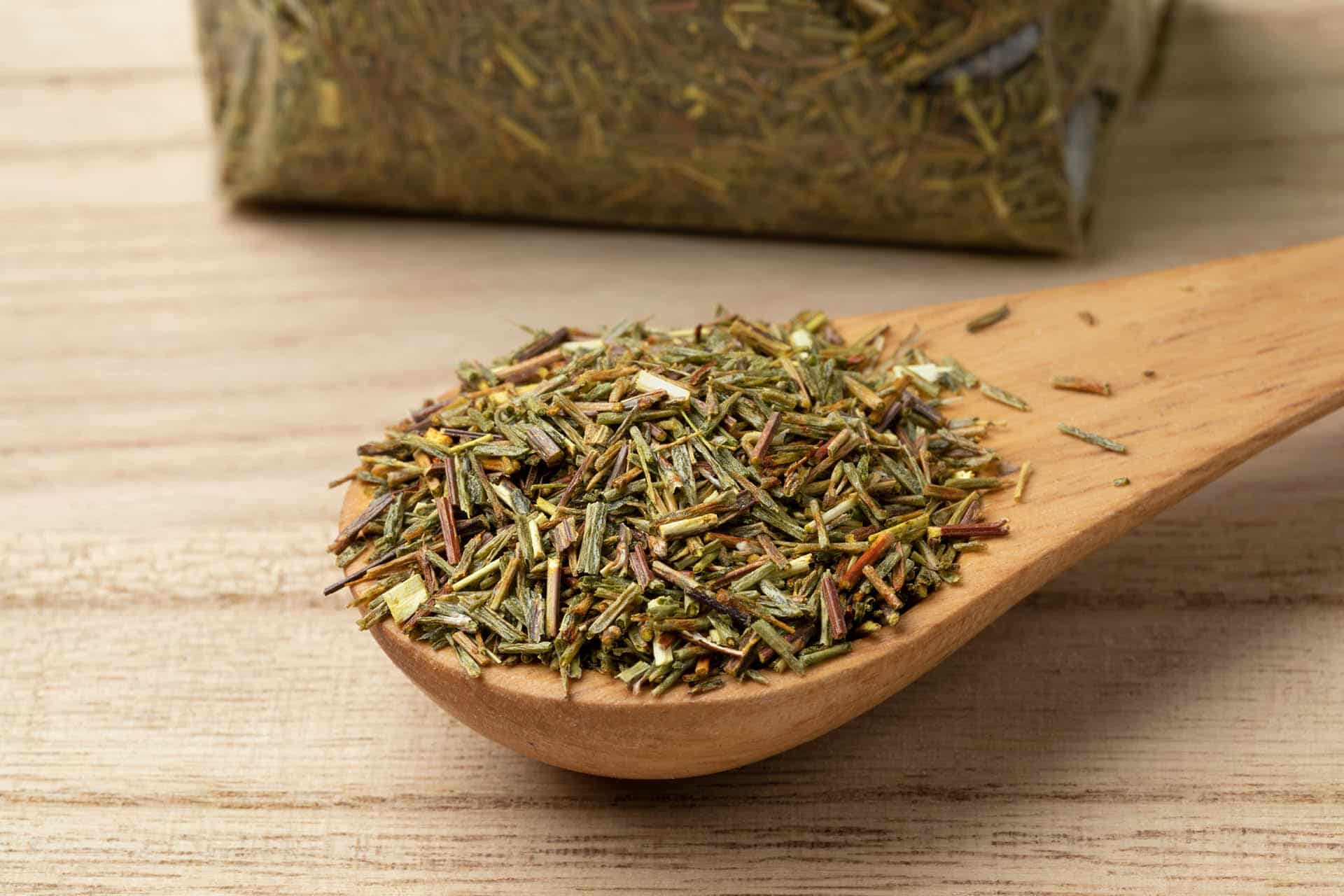Carmién » News »
The Key Differences Between Green Rooibos and Green Tea: Common Misconceptions and Why You Shouldn’t Confuse Them
The Key Differences Between Green Rooibos and Green Tea: Common Misconceptions and Why You Shouldn’t Confuse Them
03 October 2025
Excerpt:
Green rooibos and green tea may appear similar, but their origins, processing, and health profiles differ. Understanding these distinctions helps buyers align products with consumer trends and premium wellness demand.

Green rooibos and green tea are often grouped together because they share a light colour and are associated with wellness. They are not the same. Knowing the difference helps you choose the right cup for your body and your lifestyle.
Where They Come From
Green tea originates from the Camellia sinensis plant, primarily cultivated in China and Japan. Green rooibos is an herbal infusion from the Aspalathus linearis shrub, which grows only in the Cederberg region of South Africa. One is a true tea with natural caffeine. The other is naturally caffeine-free and suitable for any time of day, including the evening.
How They Are Processed
Both are processed to avoid oxidation, but the methods and results differ. Green tea leaves are quickly steamed or pan-fried after harvest to stop oxidation. This locks in a bright green colour and a grassy flavour. Green rooibos is heat-sterilised right after picking to halt oxidation, which preserves its green colour and creates a softer, sweeter taste with light herbal notes.
Caffeine, Tannins, and Digestibility
Caffeine is a simple dividing line. Green tea contains moderate caffeine, which can help with alertness. For some, it also brings jitters or affects sleep. Green rooibos is naturally caffeine-free. It supports hydration during the day and makes sense at night if you want a warm drink that will not keep you awake. Tannin levels differ as well. Green rooibos is low in tannins, so you can steep it longer without bitterness. Green tea has higher tannins and can turn bitter if you leave the bag in too long.
What They Taste Like
Taste matters if you want to build a daily habit. Green tea is often described as grassy, sharp, and slightly bitter. Some love it, others do not. Green rooibos is naturally sweet with no astringency. That makes it easier to enjoy unsweetened, which can help you reduce added sugar over time. It also blends well with citrus, mint, and fruit, so it is a strong base for iced drinks and functional blends.
Antioxidants and Nutrients
Both drinks are rich in antioxidants, but not the same ones. Green tea is known for catechins such as EGCG. These are well-studied and support heart health, brain function, and metabolic balance. Green rooibos has a different antioxidant profile. It contains unique polyphenols, such as aspalathin and nothofagin, along with minerals like iron, calcium, and magnesium. You are not choosing more or fewer antioxidants. You are selecting two different sets of protective compounds that work in various ways.
Steeping Tips
For green tea, use water just under boiling and keep the brew short to avoid bitterness. For green rooibos, boiling water is fine, and longer steeping brings out more flavour without harshness. Due to its low tannin content, it remains smooth even if you forget the bag in your mug.
Common Misconceptions
Many people think green rooibos is simply green tea without caffeine. That is not correct. They come from different plants, grow on different continents, and deliver different tastes and health experiences. Another common idea is that green tea is always the healthier choice. The better question is which one fits your body and your goals. If you want a clean, gentle drink you can sip all day and steep without bitterness, green rooibos is an excellent fit. If you want a mild lift from caffeine and enjoy a grassy flavour, green tea is a classic option.
Which One Fits Your Goals
If you are sensitive to caffeine or want a calming evening routine, choose green rooibos. It is caffeine-free, low in tannins, and packed with its own set of antioxidants. If you want a daytime cup with a gentle lift, choose green tea. It brings a well-researched catechin profile. There is room for both in a balanced lifestyle, and alternating them can give you a broader mix of phytonutrients.
Why Commercial Buyers Should Consider Green Rooibos
There is a strong case to see green rooibos as the new green tea from a market point of view. Consumers are asking for caffeine-free, clean-label options that still feel functional and premium. Green rooibos answers that brief. It is naturally caffeine-free, low in bitterness, and easy to drink without sugar. It steeps clean in hot or cold formats, works well in ready-to-drink bottlings, and pairs naturally with wellness-forward flavours like ginger, citrus, and mint. Its unique antioxidants offer a credible health story that is different from green tea, not a copy of it. On crowded green tea shelves, green rooibos gives you a point of difference that aligns with trends in sleep support, stress balance, and all-day hydration. It is also versatile for speciality lines, barista formats, and better-for-you innovations.
Bottom Line
Do not confuse them. Choose green tea when you want a caffeinated, grassy cup with classic catechins. Choose green rooibos when you want a caffeine-free, smooth, and naturally sweet brew with its own powerful antioxidants. Both can be part of a health-focused routine. Knowing the difference helps you drink with purpose.
References:
- Johnson, K.R.O.S. 2023. 8 Health Benefits of Rooibos Tea vs Green Tea. From the Desk of Dr. Karl R.O.S. Johnson, DC. Available at: https://www.helpmychronicpain.com/blog/8-health-benefits-of-rooibos-tea-vs-green-tea (Accessed 2 October 2025).
- Maysama 2020. Is Green Rooibos the New Green Tea? Maysama. Available at: https://maysama.com/blogs/news/is-green-rooibos-the-new-green-tea (Accessed 2 October 2025).
- Brown, M.J. 2025. 5 Health Benefits of Rooibos Tea (Plus Side Effects). Healthline. Updated 13 February 2025. Available at: https://www.healthline.com/nutrition/rooibos-tea-benefits (Accessed 2 October 2025).
- Afrifa, D., Engelbrecht, L., Op’t Eijnde, B. and Terblanche, E. 2023. The health benefits of rooibos tea in humans (Aspalathus linearis): a scoping review. Journal of Public Health in Africa, 14(12), 2784. doi:10.4081/jphia.2023.2784. Available at: https://pmc.ncbi.nlm.nih.gov/articles/PMC10774856/ (Accessed 2 October 2025).

